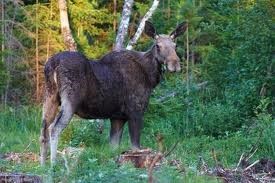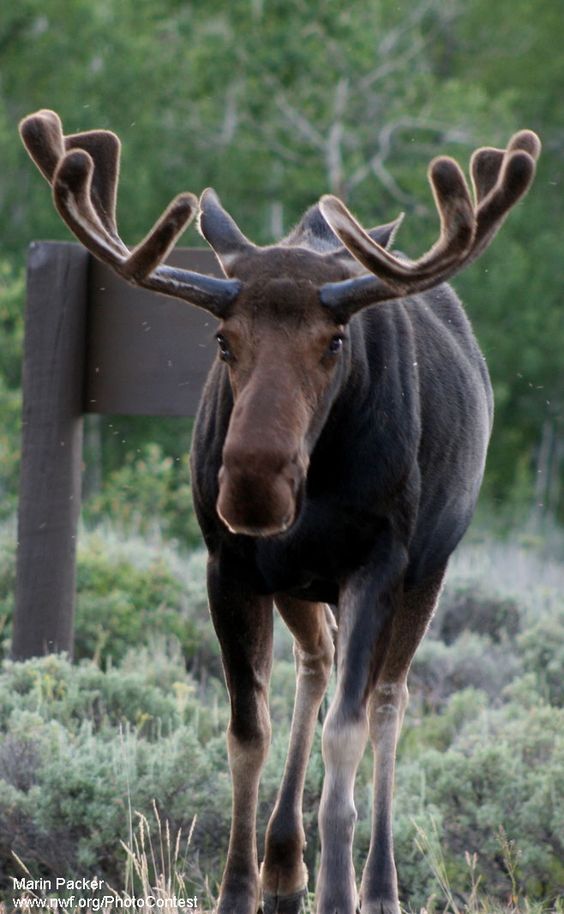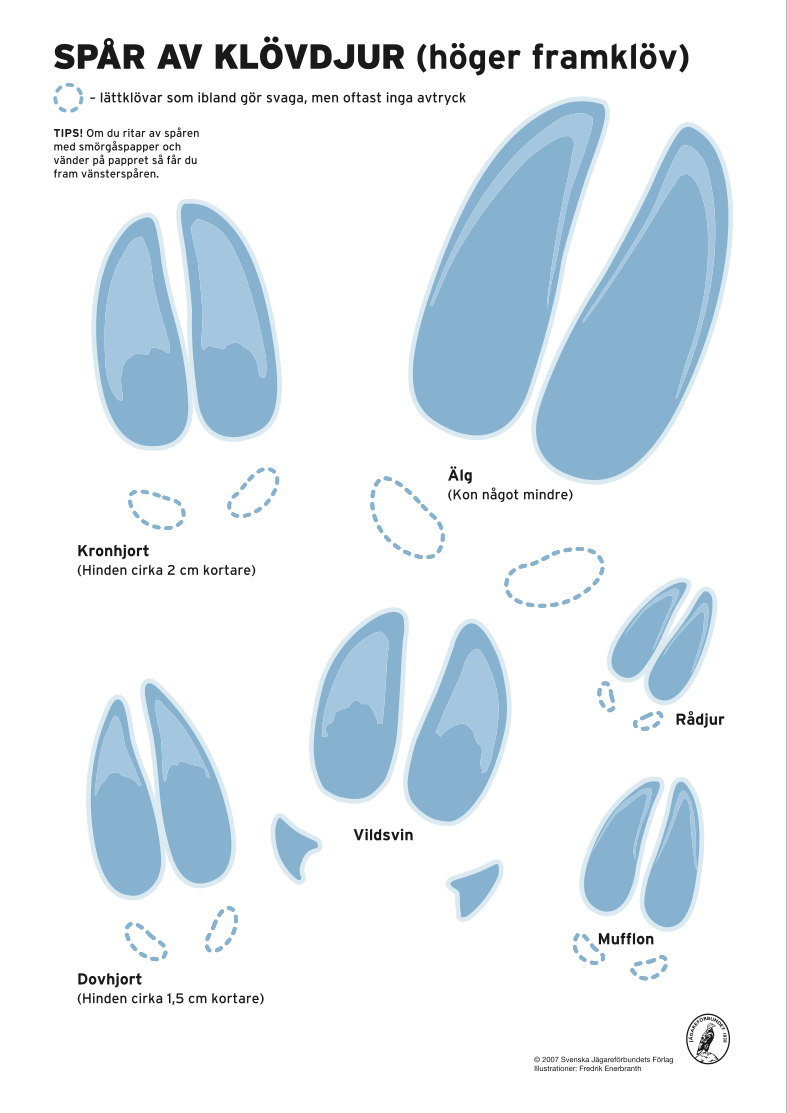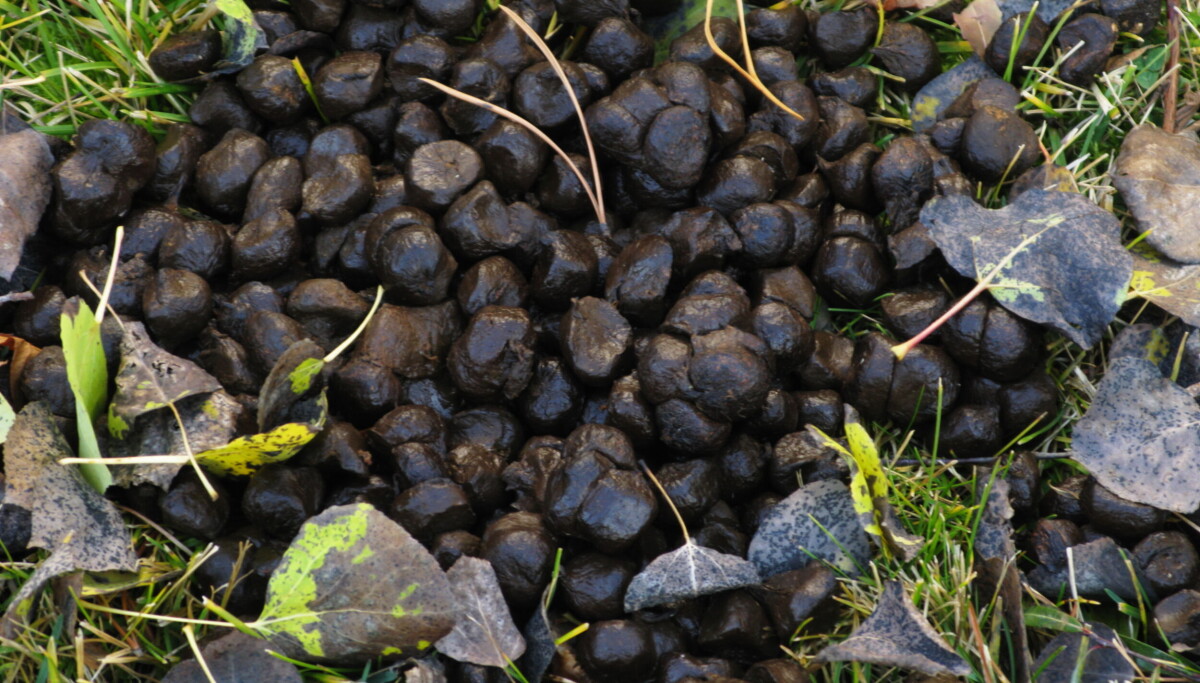Moose indentation

The moose is the world’s largest member of the deer family and Sweden’s largest and most important game animal.
It occurs throughout the country except on the island of Gotland, although population density varies greatly between regions.
Moose are highly adaptable and live in both forested areas and agricultural landscapes.
In summer they may even move above the tree line in mountain regions to graze.
In southern and central Sweden, moose generally remain within a limited home range, a few thousand hectares in size.
In the north, however, moose often migrate long distances, sometimes tens of miles, between their summer and winter feeding areas.
These migrations usually go from higher elevations down to valleys where snow is shallower in winter.
The moose’s diet changes with the seasons.
In summer it feeds on leaves from trees such as willow, aspen, and birch, as well as herbs like fireweed, meadowsweet, clover, and aquatic plants.
In autumn it also eats bilberry shoots, heather, juniper, grass and clover plants, and lichens.
During winter it lives mainly on twigs and shoots of Scots pine, birch, and other deciduous shrubs, and may gnaw bark from aspen, rowan, and pine.
These winter habits often cause damage to young pine forests.
Moose are usually silent but communicate through various sounds.
Cows and calves, as well as adults traveling together, use contact calls.
The calf’s call is a low nasal “ngåh”, while the bull’s rutting call is a deep, drawn-out “uöh”.
Moose have an excellent sense of smell and hearing, but poor eyesight and no color vision, making them slow to detect stationary objects.
Appearance varies with sex and age.
A mature bull has a large, heavy head, thick neck, and often a prominent beard.
It appears shorter and stockier than the cow, which has a longer and more rectangular body.
All bulls carry antlers of some kind.
Calves are easily recognized by their long legs and short necks and sometimes must kneel to graze.
Their heads are smaller and more pointed, and young bulls may show small antler buds.


Heifers (females that have not yet calved) have a more elongated head than calves and a proportionally larger head compared to the body.
Bulls are usually more square-built, while cows are slimmer and longer.
The rutting season occurs from late September to early October, slightly later in the north than in the south.
The cow is receptive for only about one day.
If she is not fertilized, she will come into heat again after about three weeks.
Gestation lasts around 235 days, and the calf is born in May or June.
Newborn calves are reddish-brown, turning gray in September–October when the winter coat develops.


Young cows usually bear one calf, while older cows often have two.
Triplets are rare but do occur.
A newborn calf weighs 10–17 kg, doubling its weight in the first month.
By October, a calf may weigh 150–180 kg.
During winter, growth slows and calves often lose weight, regaining condition in spring.
At about two years of age, now called a yearling, a moose may weigh up to 300 kg.
The calf stays with its mother through winter and is driven off when she is ready to calve again.
Cows become sexually mature in their second or third year and may remain fertile until about 20 years of age.
In northern Sweden, cows often calve for the first time at four to five years.
Normally, a cow calves every year, but if she is in poor condition or faces competition from other cows, she may skip a year.
Permanent infertility does not occur in moose.
A bull’s antler growth follows the development of its skeleton and reaches full size at six to ten years of age.
After that, the antlers remain roughly unchanged for several years, then decline in size as the animal ages, forming so-called return antlers.
Because adult mortality is high, such antlers are rarely seen by hunters.
Antlers vary greatly in form and are divided into two main types:
Palmate (broad) antlers and beam (branching) antlers.
Beam antlers have thick, smooth tines, while palmate antlers have a wide blade-like surface with short tines along the edge.
Intermediate forms also occur.
Antlers are shed between December and March, with older bulls shedding first.
New antlers start growing in spring and are covered with velvet skin, which dries in August when the moose rubs it off (thrashes).
The antlers are then carried through autumn until they are shed again.


A bull typically gains more and larger tines with age up to about seven years.
An antler with four tines on each side is called an even eight-pointer, while one with three on one side and four on the other is an uneven eight-pointer.
The name is always based on the side with the greater number of tines.
Antlers are rarely used in combat — they mainly serve to impress other moose.
In earlier centuries, moose were almost locally extinct in parts of Sweden.
Only in the 20th century did scientific management of moose populations begin, leading to a strong recovery.
During the 1980s, numbers peaked, reaching a record in 1982 with 174,700 animals harvested.
Since then, the population has declined again.
Today, some areas have too many moose, while others have too few, and management is now handled locally through moose management areas.
Moose hunting today lasts for several months.
In northern Sweden, the hunt begins in September (before the rut), while in southern and central regions it starts in October (after the rut).
Harvest quotas are based on reproduction — at least half of the harvested animals should be calves, and at least 40% of adults should be bulls.
Hunting is usually carried out as team hunts over large areas, but several methods are used:
- Hunting with baying dogs (ställande hund)
- Stand hunting (vaktjakt)
- Driven hunts (drevjakt)
- Stalking (smygjakt)
- Calling (lockjakt)
Only Class 1 rifles are allowed, and a trained tracking dog must always be available during moose hunting.
The main cause of death among moose is hunting.
Few moose die of natural causes; accidents such as collisions with cars or trains, and predation by wolves or bears, are more common.
Injuries from fights between moose bulls are rare.
Tracks and Droppings
Moose droppings consist of small, round or oval pellets, 20–30 mm long and 15–20 mm wide.
Winter droppings are light, dry, and hard, while summer droppings are dark, soft, and moist and may form clusters.
Moose tracks are easy to recognize by their large, elongated, rectangular shape.
The sharp hooves leave distinct prints, and the dewclaws (higher toes) are often visible.
A front hoof print of a mature bull measures 13–15 cm long and 11–13 cm wide, while hind tracks are slightly smaller.
Cow tracks are generally smaller than those of bulls.


Other signs of moose include rut pits dug by bulls at mating sites and thrashing marks on trees and shrubs.
Common Moose Diseases
Älvsborg Disease
Discovered in the 1980s; occurs throughout Sweden.
Causes diarrhea and inflammation of mucous membranes, intestines, eyes, or skin.
The cause is unknown but suspected to be viral.
Brain Worm (Elaphostrongylus rangiferi)
A roundworm 5–6 cm long, common in moose and other cervids.
Infects moose via snails and lives in the spinal canal.
Infected animals may show coordination problems and die.
Most common in calves during harsh winters.
Moose Louse Fly (Lipoptena cervi)
A winged fly that loses its wings and lives in the moose’s fur.
Bites the skin, causing itching and hair loss.
It can bite humans but is not dangerous.
Tumors
Rare in moose but occur in older animals.
A common one is ethmoidal tumor, growing in the nasal cavity and sometimes spreading to the brain, causing movement problems and loss of smell.
Seen mostly in older cows.
Fibropapillomas and Fibromas
Benign skin tumors affecting 0.1–0.5% of Swedish moose.
Malformations
Can occur in any ungulate — for example, crooked spine or extra vertebrae.
Sometimes visible in calves but often unnoticed.
Cataracts
Common eye disease in older moose.
Causes impaired vision, though most affected animals cope well.
Frequently found in moose culled during summer despite good body condition.
Summary – Moose
- The moose is the world’s largest deer species and Sweden’s most important game animal.
- Diet: leaves, shoots, branches, herbs, aquatic plants, and agricultural crops.
- Winter feeding can cause severe damage to young pine forests.
- Rut: September–October; calving: May–June.
- Calves lose weight in winter but grow rapidly in spring.
- Young cows usually have one calf; older cows often two.
- Bulls have either beam or palmate antlers depending on genetics.
- Antlers are shed December–March; older bulls shed first.
- A prime bull is around seven years old — few live longer.
- Sweden’s moose population is regulated through hunting.
- Moose may suffer from various diseases, some transmissible to livestock and humans.
